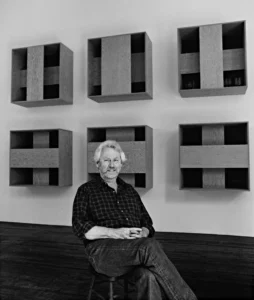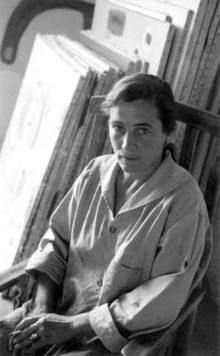Introduction:
Minimalist art speaks to a part of us that yearns for clarity and calm. Imagine standing in front of a piece of art so simple yet striking that it makes you stop, breathe, and take in the elegance of the moment. That’s the power of minimalism a movement that strips away the unnecessary, leaving only the essential. Minimalist artists brought us into a world where fewer elements create more impact, reminding us that there’s beauty in simplicity. Let’s delve into the lives and works of the pioneers who crafted this iconic style and explore why their art continues to resonate in today’s complex world.
Table of Contents
What is Minimalism Artists?
Minimalism emerged in the 1960s as a stark contrast to the loud and expressive styles of the time, such as abstract expressionism. Instead of dramatic colors and complex forms, minimalist Artists embraces a straightforward approach, characterized by basic geometric shapes, limited colors, and a focus on form and space. Its core message? Less is more.
Key Principles of Minimalism in Art
- Geometric Shapes: Simple shapes like circles, squares, and lines dominate minimalist Artists compositions, keeping the focus on pure form.
- Limited Color Palettes: Many works stick to monochrome or muted colors, highlighting the importance of every hue chosen.
- Negative Space: The open or “empty” space in minimalist art plays a crucial role, directing attention to what’s present by emphasizing what isn’t.
- Emphasis on Materials: Minimalist artists often let the natural texture and character of materials whether metal, glass, or concrete speak for themselves.
Minimalism is more than a style; it’s a philosophy that challenges you to see beauty in essentials. This simplicity can feel refreshing, even meditative, as it draws your focus to the purity of form and space.
Donald Judd: Master of Industrial Simplicity

Donald Judd is often seen as the godfather of minimalist Artists sculpture. His vision redefined how we perceive art by removing any symbolic meaning and leaving behind only raw form and material.
The Approach
Judd’s sculptures consist of simple, industrial shapes often displayed in repetitive sequences. His use of steel, Plexiglas, and concrete speaks to his belief that art should be “specific objects” free of traditional representation or meaning Minimalist Artists .
Key Works
One of his most famous works is an untitled series of stacked metal boxes. These sculptures eliminate ornamentation, leaving only form, balance, and space to guide your experience. Judd’s influence is also immortalized in Marfa, Texas, where his large-scale installations continue to draw visitors.
Legacy
By focusing on form and dismissing traditional interpretations of art, Judd pushed the boundaries of Minimalist Artists , inspiring future artists to embrace industrial materials and emphasize structure over decoration. His work is a study in precision and purity, demonstrating how art can communicate without needing symbols or elaborate designs.
Agnes Martin: The Serenity of Minimalist Painting

Agnes Martin’s approach to minimalism diverged from the industrial focus of her contemporaries. For her, minimalism was a tool for creating a meditative, almost spiritual experience in Minimalist Artists . Her work is subtle, inviting you to pause and find tranquility.
The Approach
Martin’s paintings often feature soft grids and gentle lines, using a muted color palette to create a sense of calm. Rather than sharp lines or geometric forms, she preferred understated brushstrokes that created a delicate balance within her compositions. Her art feels like a gentle whisper, inviting viewers to reflect and feel.
Key Works
Pieces like “Night Sea” embody her signature style, where soft grids become almost invisible unless you look closely. The works evoke a peaceful, meditative state, which Martin described as a pursuit of beauty and perfection.
Legacy
Martin’s influence on minimalism lies in her ability to capture emotion through restraint. Her art shows that minimalism can be personal and introspective, bringing peace through repetition and simplicity. For those who appreciate subtlety and depth, her works are a reminder of how minimalism can touch the soul.
Frank Stella: Precision in Geometry and Repetition

Frank Stella took a distinct approach to minimalist painting, focusing on precision and repetition. Known for his mantra “what you see is what you see,” Stella’s works emphasize the painting as an object itself, rather than a representation of something else.
The Approach
Stella’s early “Black Paintings” series epitomizes his minimalist ethos Minimalist Artists, featuring patterns of straight, parallel lines in black enamel. This geometric precision removes any emotional or symbolic layer, leaving only form and pattern. Stella’s later “Protractor” series introduced vibrant color and complex, symmetrical forms, further exploring the idea of art as pure visual experience.
Key Works
“Die Fahne Hoch!” and other pieces from his “Black Paintings” series illustrate his commitment to precision and simplicity. These works may appear stark, but they reveal Stella’s dedication to form and repetition, challenging viewers to see the painting itself as a complete statement.
Legacy
Stella’s contribution to minimalism is his focus on geometry and color as the sole subjects of his work. By treating paintings as objects, he stripped them of deeper meaning, showing us that art can exist simply as a visual experience. His influence continues in modern geometric art and design, where form takes center stage.
Ellsworth Kelly: The Power of Color and Shape

Ellsworth Kelly’s approach to minimalism relied on simplicity in color and shape. His work often combines bold, pure colors with basic shapes to create compositions that are both striking and elegant.
The Approach
Kelly’s art is known for its vibrant color and abstract forms, using minimal shapes to create visual impact. His belief was that colors and forms should “speak” directly, without intricate designs or symbolism. His style is clear and bold, making each piece both straightforward and full of life.
Key Works
Works like “Blue Red” and “Spectrum V” are iconic examples of Kelly’s style. These pieces, featuring simple color blocks or shapes, demonstrate his belief in the expressive power of color and form alone.
Legacy
Kelly’s art has influenced the minimalist movement by demonstrating how color can stand alone as a focal point. His style has inspired color field painting and abstract expressionism, leaving a lasting impact on art that values simplicity over complexity.
Dan Flavin: Illuminating Minimalism with Light
Dan Flavin took a unique approach to minimalism by using light as his medium. His fluorescent light sculptures transformed spaces, creating an immersive experience that blends art with its environment.
The Approach
Flavin’s works often feature fluorescent tubes arranged in geometric patterns, casting colored light that interacts with the space. These light sculptures eliminate the need for a traditional “canvas” Minimalist Artists instead using walls and rooms to create a fully immersive experience.
Key Works
“The Diagonal of May 25, 1963” and his large-scale installations show how Flavin used Minimalist Artists means to create a powerful effect. These works illuminate spaces, transforming them and inviting viewers to experience art as a physical and spatial phenomenon.
Legacy
Flavin’s use of light and space changed how we think about art installations. His work shows that minimalism isn’t limited to traditional forms or materials. Today, his influence can be seen in modern installation art, where light and space continue to shape the viewer’s experience.
The Legacy of Minimalist Artists in Modern Art and Beyond
Minimalism has left a lasting impact not only in art but across various fields like architecture, interior design, and even lifestyle choices. The principles championed by minimalist artists have transcended the gallery, influencing how we create and consume in our daily lives.
Modern Applications of Minimalism
- Architecture and Interior Design: Clean lines, open spaces, and functional furniture reflect minimalist principles.
- Product Design: From smartphones to home goods, Minimalist Artists influence is evident in sleek, unembellished designs.
- Lifestyle: Minimalism as a lifestyle encourages living with less, focusing on essentials, and appreciating simplicity.
Minimalism isn’t just an art movement; it’s a way of thinking that encourages you to focus on what truly matters. Its principles invite us to find satisfaction in less, whether in our spaces, belongings, or creative expressions.
Conclusion:
Each of these artists Donald Judd, Agnes Martin, Frank Stella, Ellsworth Kelly, and Dan Flavin brought something unique to minimalism. They simplified forms, focused on color, explored space, and used industrial materials, showing us that art doesn’t need to be elaborate to be meaningful. Minimalism’s influence continues today, reminding us to appreciate clarity and purpose in a world that often feels cluttered.
By exploring the work of these artists, you gain insight into how minimalism invites you to look beyond complexity. So next time you encounter a minimalist piece, pause and let it speak to you because in simplicity, there is beauty.
FAQ:
What defines minimalist art?
Minimalist art is about simplicity, emphasizing basic shapes, limited colors, and an overall lack of intricate details. It aims to convey ideas with as few elements as possible.
Who are the most famous minimalist artists?
Some of the most renowned minimalist artists include Donald Judd, Agnes Martin, Frank Stella, Ellsworth Kelly, and Dan Flavin.
Why is minimalism important in art?
Minimalism is valued for its focus on essentials. It challenges viewers to appreciate pure form and encourages us to look beyond complexity.
